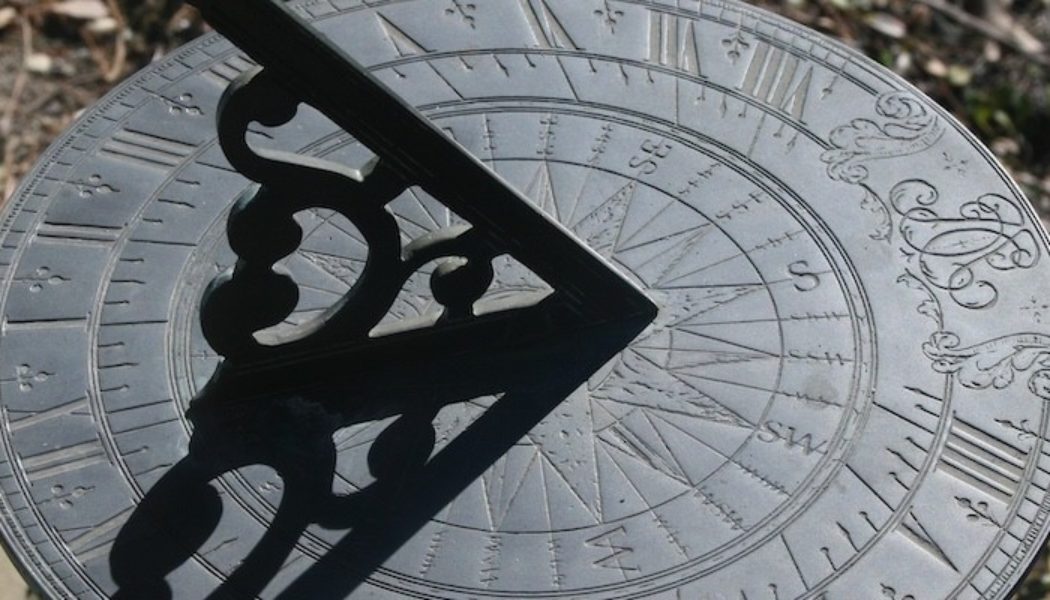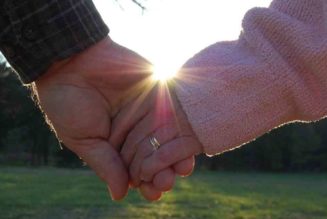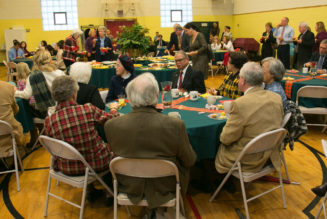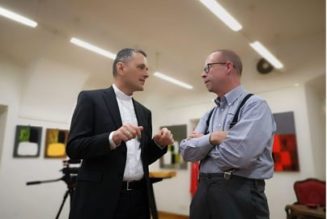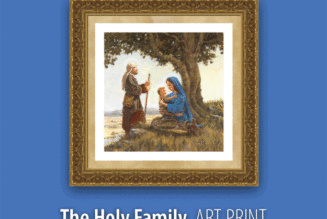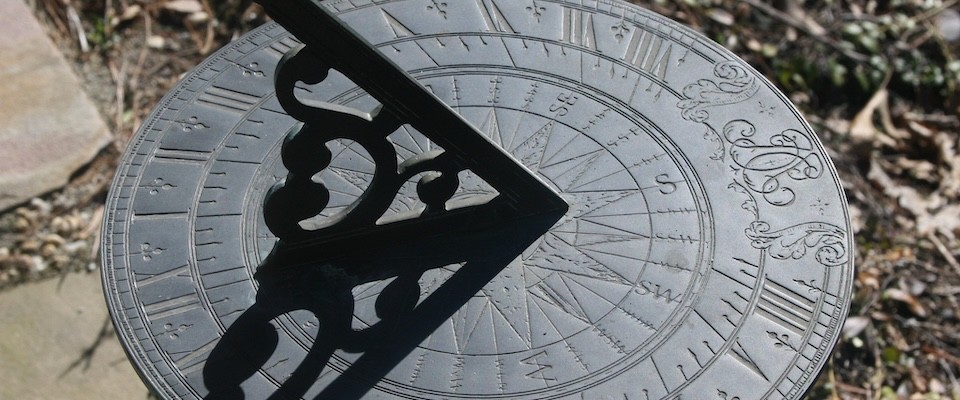
This past June I attended my daughter’s high school graduation. Observing the wrinkles, gray hair, and softening jawlines of the other parents, I concluded that most people weren’t aging well. A few mothers, hoping to escape these indignities, had been victims of aggressive plastic surgeons, but on the whole, everyone just looked middle-aged. At home that evening I asked my husband, expecting a flattering or reassuring answer, whether we could possibly look as old as those parents. He replied, “No, Elizabeth. We look older than they do.”
It doesn’t seem long ago that I was my daughter’s age. I remember so vividly what it was to be nineteen and twenty—in scientific terms this is called the “reminiscence bump”—that some part of me foolishly thinks I still am. It is a hazard of teaching college students: Professors are surrounded by people who are poised between late adolescence and early adulthood, even as we ourselves advance a full year, every single year, without fail. One September you are “just a few years older” than the students; soon you are the same age as their parents. Not long after that, you could be a young grandparent. The generations slip by in a steady course as we progress from early to late middle age and eventually, if we are lucky, into old age.
But it doesn’t go quite as smoothly as that. Every year brings some fresh intimation of mortality—a loss, a decline in capabilities, the death of a mentor or loved one. And each personal loss brings a welter of emotions. I distinctly remember an instance, not so long ago, when the person I lost was exactly the age I am today. Yet now, when I look at my hands or my neck, or observe that I look increasingly like my parents, I am forced to admit that I am far past twenty or even forty: I am squarely middle-aged. And I have wondered how to think about this undeniable fact.
The English language has many choice phrases to describe this period of life: “the wrong side of forty,” “midlife” (usually paired with “crisis”), and my favorite, “long in the tooth”—a phrase derived from the observation that a horse’s teeth grow continuously into very old age. These descriptions are not especially flattering, and they reflect the current American vision of life’s progression: a peak in our early decades—twenties, thirties, or perhaps forties—and then a long plateau followed by decline.
This vision is partially right. Many momentous events occur in youth, and we imagine that we will retain our youthful bodies and abilities forever. But by our thirties or forties, a pattern of life has emerged, and by fifty most people are pretty well established, at least in terms of temperament and disposition. As Aristotle observes, long years of habit tend to form a firm and unchangeable character, for good or ill.
Those long years also yield bodies that bear scant resemblance to the youthful ones we thought would never change. Men and women alike tend to become thicker around the middle. Men commonly lose their hair, while women lose muscle tone and develop the dreaded upper-arm “bat wings” or skinny old-lady legs. Fashion magazines eagerly tell their mostly female readers what clothes are appropriate and flattering for each decade, although the suggestions tend to drop off around age fifty, as if nobody needed any fashion advice after that. Is every woman over fifty expected to go straight to the housedress or the grave?
And the unattractiveness is not merely physical. In common usage, “middle-aged” suggests mediocrity, stodginess, and dullness, something like that tedious middle segment of a long car trip—neither the setting out nor the arrival. This is the life that J. K. Rowling envisions for those consummately middle-aged and middle-class parents, Petunia and Vernon Dursley, whose existence consists of watching TV news, going to bed early, complaining, and generally eschewing anything that is fresh, original, or interesting. Yet I don’t think this vision of life is quite right. Having arrived at the supposed plateau of middle age, I have been surprised and delighted to discover certain “consolations” that attend its arrival.
The first consolation initially sounds odd, given our culture’s celebration of choice: Our own choices are now quite constrained. My contemporaries and I are no longer naive about marriage, singleness, or divorce; we have either experienced these things or watched others go through them. Most of us are finished with childbearing, if we have children. We have dealt with plumbing leaks and mortgages, perhaps debt or prosperity, sudden accidents and reversals of fortune, difficult colleagues and career disappointments. We are getting acquainted with aches and pains. We probably have some experience of sickness, and the prospect of death is not as foreign as it once was. We now see that life is not always a matter of choice; so much happens to us without our having any say at all. But we have already made most of the choices life does offer; now we must live with them.
Nowhere does the difference between youth and middle age become clearer than in conversations with students about their futures. Often, they are approaching graduation and weighing multiple opportunities. So far, so good—except that these opportunities also cause them anxiety about what to do, what is worth doing, and how things are to be done. Should career be prioritized, or family? Early marriage or travel, children or dogs, or children but not just yet? Sexual experimentation or abstinence or a religious vocation?
Young people feel intensely the pain of lost friendships, heartbreak, and failure; they also suffer the anxiety that comes with picking this or that. They know well that choosing one thing usually means saying no to something else, often something equally attractive. Except within traditional religious communities, the old standard plans for life have largely been discarded. One young man told me recently that making decisions about his future was like stepping into a void. Another reported feeling that a life course had been predetermined for him, up through his college graduation; now he felt entirely unmoored. So although at times I envy the youth, beauty, and energy of my students, increasingly I am glad not to stand where they do.
The consolation is not just that I no longer have to make the choices these young people face. It is also that I can assist, counsel, and listen as they sort through their own decisions. Whatever wisdom I possess is born of long experience, free of the emotions that swirled around a given moment of life. By middle age, one’s fund of experience is ample, and pivotal moments have been analyzed and rethought over many years. We therefore have insights to share with those who follow us. In the words of George Eliot, “the middle-aged, who have lived through their strongest emotions, but are yet in the time when memory is still half passionate and not merely contemplative, should surely be a sort of natural priesthood, whom life has disciplined and consecrated to be the refuge and rescue of early stumblers and victims of self-despair.”
A second consolation of middle age might likewise seem unattractive at first: We now possess a clear view of our own aptitudes and deficiencies. All hopes of careers in gymnastics or basketball are off the table for those in my generation; and, as the joke goes, when Mozart was my age, he had already been dead for fifteen years. I know with certainty that I will never play the piano music of Liszt, write a novel, or take up mountain climbing. More seriously, and much more importantly, I also know the character of my own mind and have few illusions about my capabilities.
In his personal notebooks, Michael Oakeshott observed that the real business of life was “exploring & using & enjoying & accommodating oneself to one’s own mental character.” This character, he noted, is formed fairly early, “not of course fixed, but its main lines acquired & laid out.” Our task is to explore that mental character and learn what it can do. A person must discover “how to follow one’s own thoughts to their end . . . And to be humble about them as well as to enjoy them.”
All of this takes time, and when we are young we do not yet know our own characters, or at least do not know them fully. Perhaps we have latched onto some image of a flourishing life in a teacher or mentor and imagine that we must reproduce it, only to find that we are utterly unsuited for it. Much of youth consists of “trying on” certain mental outfits, seeing what fits and what does not.
Sometimes clarity emerges from intentional reflection, but often it comes uninvited. One of my students reported being asked by an older academic what she planned to do after college. She told him that she was only one class away from finishing a premed degree, but had changed course to do something that suited her better. “What a waste!” he immediately exclaimed. “You should finish that course so that you can pursue a career in medicine. Then you’ll be making six figures by your early thirties. What a waste not to finish.” She was shocked at his forthrightness. “It was clarifying to see how other people will judge me in the future,” she admitted. “But I’m not sorry. I want to be a wife and a mother. I won’t be upset if my career takes second place.” Yet this will certainly not be the last time she faces a test of her resolve.
Perhaps unlike the young, most people in midlife are well aware of how others judge us. We know (or can predict) the things people say behind our backs, but we care far less, or not at all. So much of early life is consumed in aspiration and anticipation, worry and comparison. In middle age, we can finally let go of the need to see ourselves always through the eyes of others. Accepting our own lack of greater perfection also frees us to be attentive to the people and happenings around us, and we can admire the excellence that others possess. As A. G. Sertillanges writes, “In the face of others’ superiority there is only one honorable attitude: to be glad of it, and then it becomes our own joy, our own good fortune.” This is a welcome liberation.
One other consolation I have discovered in middle age is an appreciation for the daily and the ordinary. In addition to whatever great and meaningful deeds any of us might perform, a well-lived life requires the unrecognized, humble, quiet, repetitive tasks that maintain existence adequately and well. We must shop, cook, clean, and repair. Although some people might want to brush aside all this (supposedly) menial work as unimportant or unworthy, without it any home or institution begins to crumble: Its paint peels, its gutters sag, its structure becomes unsound.
The very ordinariness of these daily tasks can become a source of pleasure, precisely because we know that many days are not at all ordinary. A child faces a crisis or a parent takes a fall; someone close to us receives a frightening diagnosis; or we ourselves are in an accident. At times like these we long for the ordinary, and we appreciate it when it returns. There is nothing like a Saturday on which we are left to do as we please and be thankful for the goods we possess: a house to clean, a child to take to soccer practice, friends who come for dinner.
There is also an important analogy here: The physical maintenance I have described is not so different from the work required to maintain other kinds of institutions, from churches and schools to businesses and voluntary associations. This work of maintenance is especially appropriate for those of us in midlife, who can see and appreciate the benefits we have received. In preserving these benefits for future generations, we are curators and custodians, people engaged in deeply “conservative” activities.
The consolations I have described imply that by middle age most of us have made our peace with life, and in many respects we probably have. But unless we are egomaniacs or narcissists, this peace is inevitably accompanied by some sense of sadness and failure. What regrets do we have? Have we really used our talents? Or did we waste them by being envious, lazy, or indifferent?
Some of our most poignant regrets likely have to do with the family we had, or did not have. I have heard many middle-aged people say they wished they had had more children. Nobody ever wishes for fewer. One friend tells me that he cannot bear to look at photographs of his own children as babies and toddlers because he is reminded of how quickly time has passed and of how he foolishly assumed those days would last forever. In old photos he sees himself as a young man still unaware of limits, endings, and the shortness of life.
Even if we avoid photos, nobody can escape this kind of recollection altogether, at least not with parents, children, and old friends. When we see these people after an absence, we notice how they have aged—new lines around the eyes and mouth or a hairline that has receded still farther. In our parents we observe a slower, less secure gait and the need to take more frequent rests. Every change is an “emblem of extinction,” and changes occasion sadness, especially in a culture that celebrates novelty and beginnings: births, graduations, weddings, and first steps.
The writer James Baldwin remarks on this phenomenon in a letter to his nephew, noting the changes Baldwin has seen in his own brother. “If you’ve loved anybody that long,” he observes, “first as an infant, then as a child, then as a man . . . [y]ou gain a strange perspective on time and human pain and effort. Other people cannot see what I see whenever I look into your father’s face, for behind your father’s face as it is today are all those other faces which were his.” Other faces, other years, other periods of life, all irrecoverable.
Not long after my daughter’s graduation, I awoke one morning to the realization that my children had become young adults, and that I was now “of a certain age,” as the phrase goes for women. I listened as my parents, who are in their mid-eighties, told me that almost every week they attend a funeral of a friend or acquaintance. Surely most of us in midlife are not yet in this situation.
We are, however, at that curious hinge point between youth and old age, between expectation and achievement. Time no longer stretches expansively ahead, and we are aware, as C. S. Lewis once observed, of “how soon one begins to feel the shortness of the tether: of how many things, even in middle life, we have to say ‘No time for that,’ ‘Too late now,’ and ‘Not for me.’” What we learn at midlife is therefore bittersweet; it is full of consolations and insight, but it also foretells declines and endings.
Not long ago, while I was eating breakfast alone in an upscale hotel, a well-dressed older man approached me and uttered one cryptic line before walking away. He said, “One has to wonder how long these glorious days are going to last.” I do not know quite what he had in mind. But I think this is the right question for all of us who find ourselves in this strange but precious middle moment of life.
Elizabeth C. Corey is associate professor of political science in the Honors Program at Baylor University.
Image by liz west licensed via Creative Commons. Image cropped.
